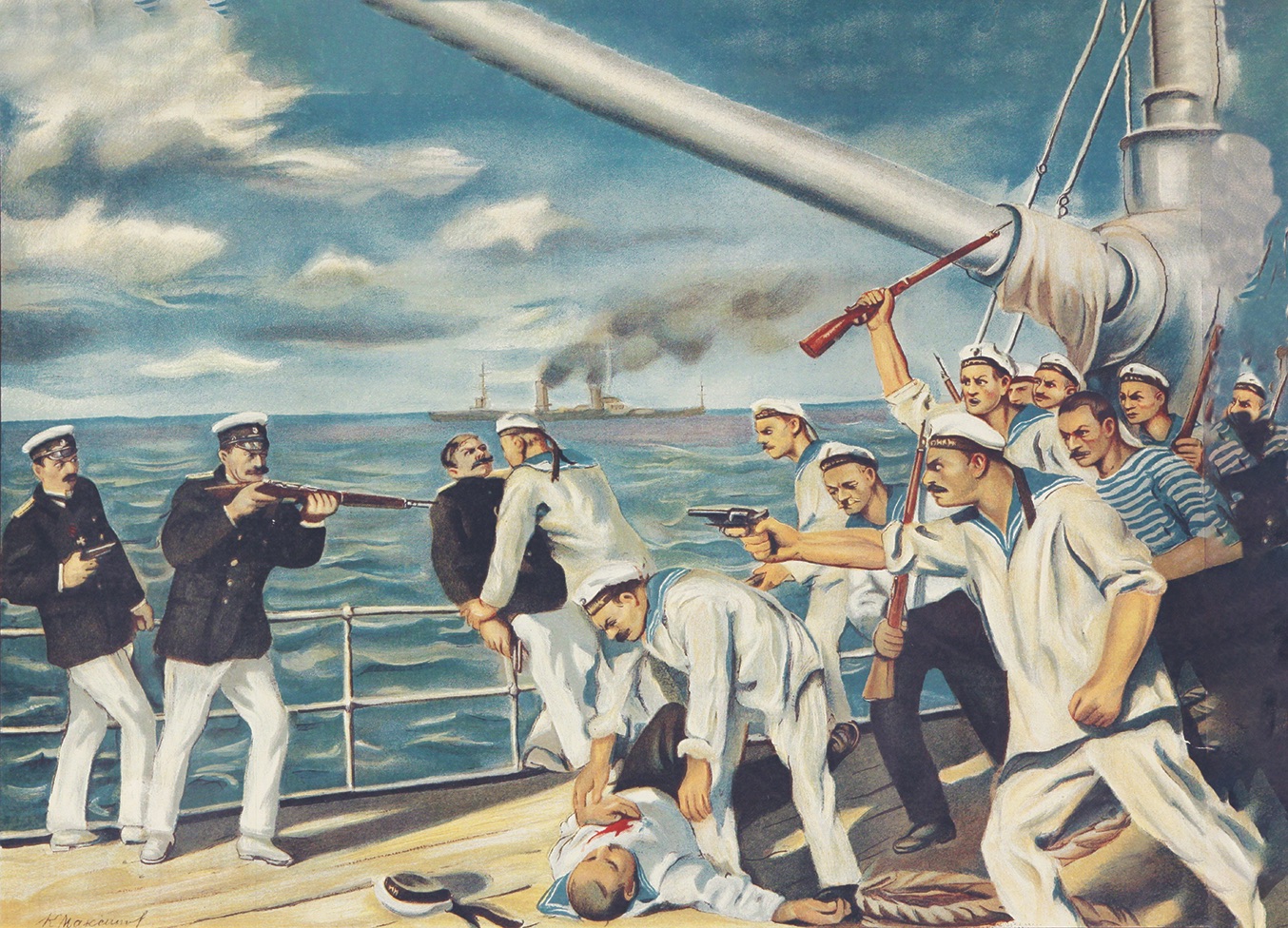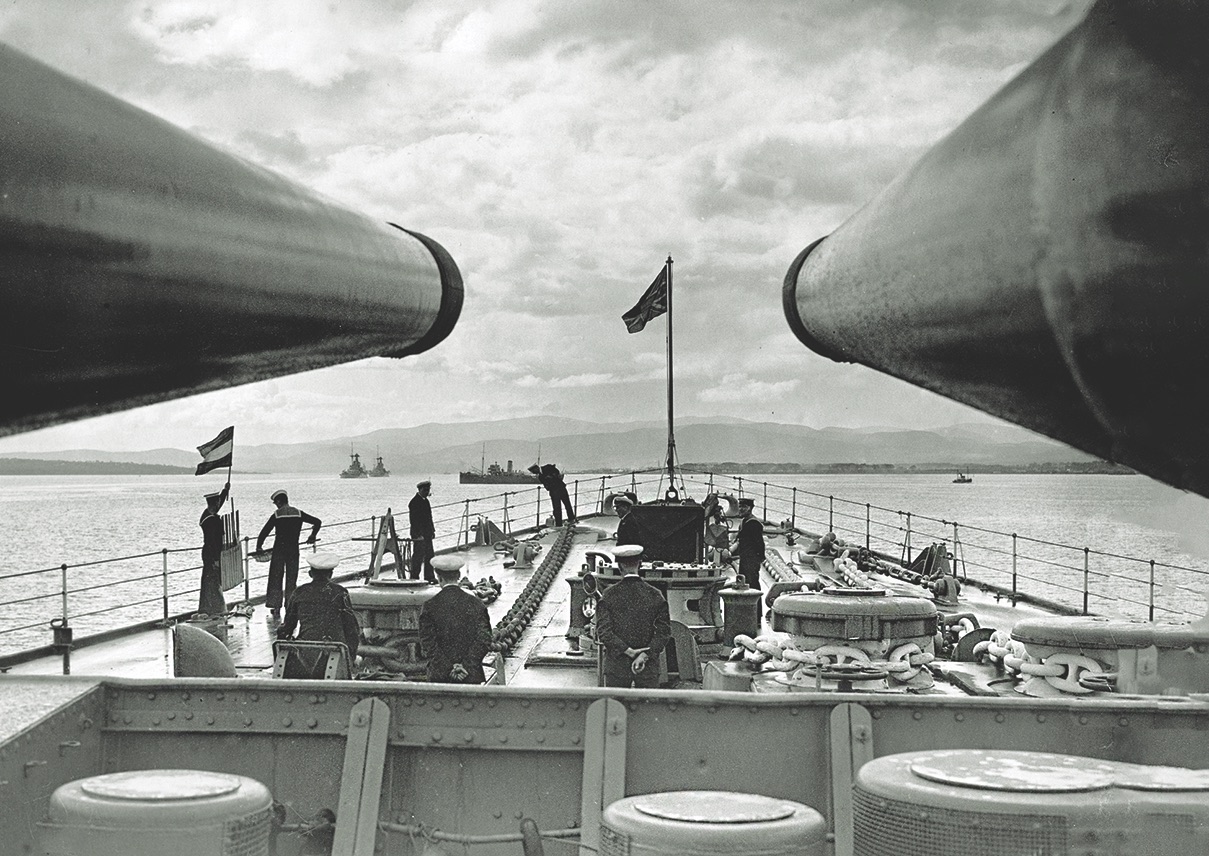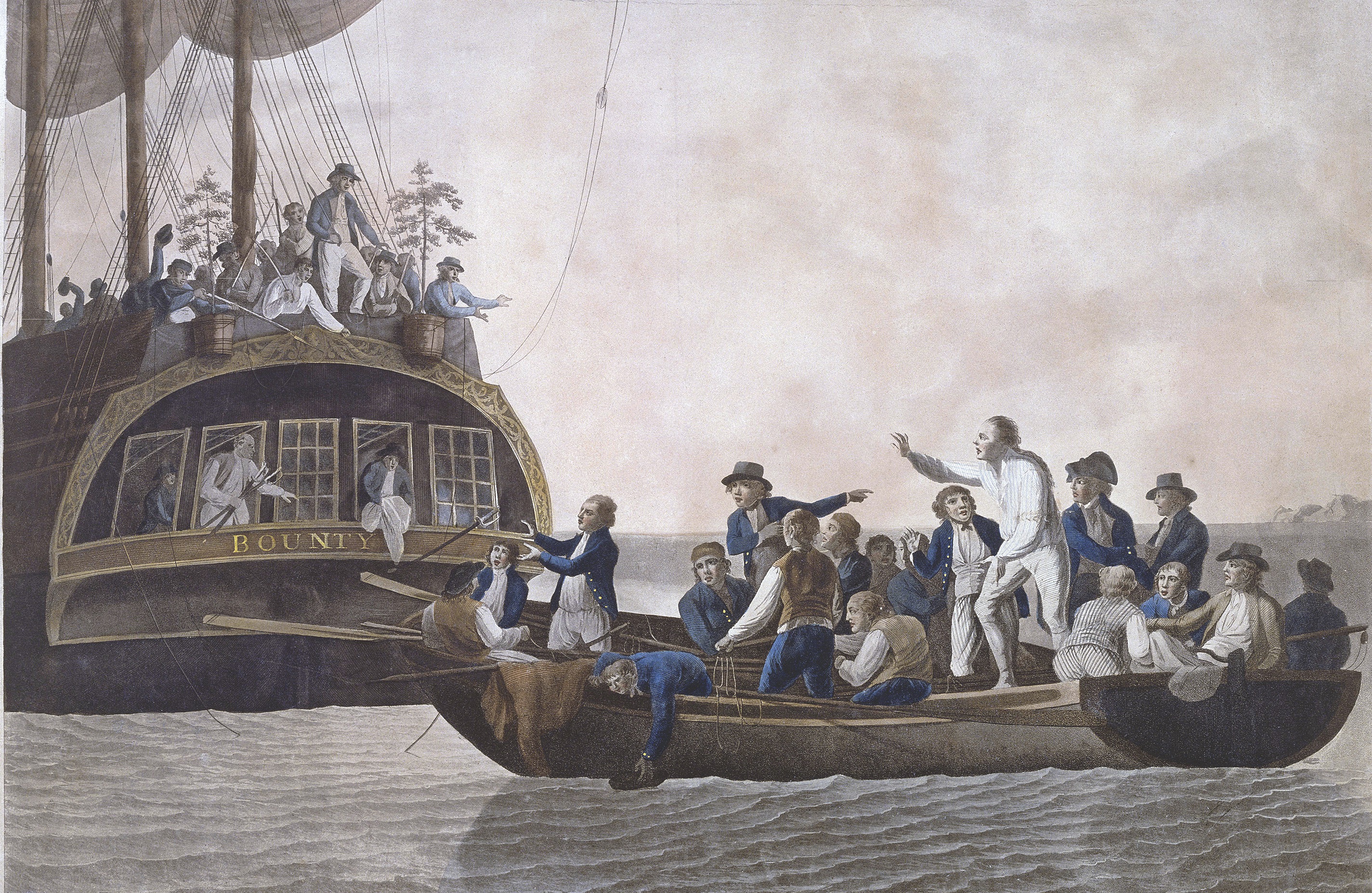Meermin (1766)
In January 1766 the Dutch East India Company ship Meermin left Madagascar with about 140 slaves destined for servitude at a burgeoning settlement in what is now part of Cape Town, South Africa. Days into the 1,700-mile journey, Meermin’s novice captain ordered that some of his captives be unchained and allowed to occupy portions of the decks, where they were to clean swords and metal-tipped spears collected as souvenirs during the slave-gathering mission. But the Malagasy captives used the weapons to attack and kill half the 60-man crew, while their fleeing cohorts barricaded themselves in the ship’s lower quarters. The mutineers were bent on returning home, but with no knowledge of sailing, they freed some crew members to show them the ropes. Under cover of darkness, however, the Meermin’s navigators covertly piloted the three-masted vessel toward South Africa, finally arriving off its coast at the end of February. Six dozen Malagasy headed ashore in small craft, thinking they had successfully reached their homeland, only to be captured by a militia of Dutch farmers. The others on board soon surrendered, and by March more than a hundred of them were transported by land to Cape Town, where they spent the rest of their lives in slavery.
HMS Bounty (1787)
HMS Bounty set out for the South Pacific in the final days of 1787, transporting tropical breadfruit saplings to the West Indies to help feed the African slaves toiling there. Commanding the Bounty was 33-year-old William Bligh, a veteran of naval battles best known for his floggings and other acts of cruelty to his sailors. In April 1789, shortly after a pleasurable five-month layover in Tahiti, Master’s Mate Fletcher Christian and a small band of mutineers seized control of the ship, in the process forcing Bligh and 18 of his loyalists into a small boat equipped with five days’ worth of supplies and no navigational aids. The Bounty headed for a nearby island before circling back to Tahiti, and from there some of the crew—along with their Tahitian companions—moved on to the remote, uninhabited South Pacific island of Pitcairn, where they put down roots in a small colony. Bligh, meanwhile, managed to safely pilot his dinghy some 3,600 miles to Timor, and from there returned to England. In 1805 he was appointed governor of New South Wales, in Australia, but was later arrested by mutinous soldiers after barring the importation of liquor.

Spithead and the Nore (1797)
In the spring of 1797, Britain encountered a double-barreled threat when mutinies by Royal Navy sailors in two strategic locales threatened to jeopardize its war efforts against Revolutionary France. The first insurrection, a well-organized, peaceful work stoppage that began on April 16 and lasted a month, broke out at Spithead, an anchorage near Portsmouth on England’s south coast. At issue were wages that hadn’t been raised in well over a century, along with inedible chow, brutality by officers, and miserable living conditions. Crew members of 16 vessels refused to put to sea until their demands were met, and the British government, fearful of an imminent invasion by the French, made the requested concessions. By contrast, the subsequent mutiny, which began on May 12 and spread across vessels stationed at the Nore in the Thames Estuary, was more than just a strike for better pay and the like: These protesters also demanded changes in the Articles of War, the dissolution of Parliament, and other matters of politics. When the government pushed back, the protesters attempted to blockade the Thames River. But the mutiny was soon quashed, and its ringleader, former midshipman Richard Parker, was convicted of treason and piracy and hanged.
HMS Hermione (1797)
The bloodiest mutiny in British naval history took place on September 21, 1797, when crew members of HMS Hermione, a frigate on patrol in the West Indies, attacked 10 superiors with knives and sabers before throwing the men overboard. Among those brutally murdered was the ship’s 24-year-old captain, Hugh Pigot, the son of a Royal Navy admiral. His brief tenure as commander was distinguished by his cruelty and violence, most notably his propensity to flog his men for even minor infractions. The tension his behavior caused bubbled over when three sailors, racing to bring in the sails during a storm, fell to their deaths, and Pigot had them thrown overboard. He blamed their demise on a dozen of their shipmates, who were then lashed for their bogus indiscretions. The following evening, some 20 drunken seamen took savage revenge on Pigot and his inner circle, throwing corpses and bloodied bodies overboard. The mutineers then sailed to La Guaira, in what is today Venezuela, where they handed their ship to Spanish authorities in exchange for asylum. Two years later, the Royal Navy captured the Hermione. Navy personnel also captured more than 30 mutineers, two dozen of whom were found guilty at trial and executed.

USS Somers (1842)
In September 1842, the U.S. brig Somers sailed from New York with a dual mission: to deliver dispatches to the frigate Vandalia off the Atlantic coast of Africa and to recruit for service the many teenage apprentice volunteers on board for the mission. Among the crew of 120 was Midshipman Philip Spencer, the 19-year-old son of Secretary of War John C. Spencer, whose drunken behavior had already caused him to be banished from two other ships. Two months out of port the ship’s captain, Commander Alexander Slidell Mackenzie, accused Spencer of plotting to commandeer the Somers and, along with a band of about 20 collaborators, operate it as a pirate ship from the West Indies. Whether Spencer was actually planning a mutiny or just kidding about it with others, as he insisted, is uncertain, but the outcome is indisputable: Mackenzie and six of his senior officers decided that Spencer and two others were indeed plotting such an act, and the three men were hanged and buried at sea—the only U.S. naval mutiny to ever result in executions. After reaching New York in mid-December, a court of naval inquiry and a subsequent court-martial, held at Mackenzie’s request, cleared him of any wrongdoing.
Potemkin (1905)
Discontent had been simmering for months aboard the Potemkin, but it was an unpalatable ultimatum from the captain of the Russian battleship that finally sparked the June 1905 revolt: Either eat the cook’s borscht, which was apparently contaminated with maggot-infested meat, or face execution. The crewmen pushed back, sending Grigory Valenchuk to negotiate, but the ship’s incensed commander, Ippolit Giliarovsky, shot the emissary. In retaliation, crew members threw Giliarovsky overboard and, led by Afanasy Nikolayevich, a torpedo machinist, killed or captured other officers and assumed control of the ship. For the 11 days that followed, flying the red flag of anti-tsarist revolution, the “people’s committee” commanding the Potemkin sailed between Odessa, the Crimea, and other ports, hoping that their mutiny would inspire ships in the Black Sea fleet to follow suit. It was not to be: Although Russian sailors elsewhere also mutinied, the uprisings were quickly quashed. Chased by Russian navy ships, and unable to replenish their dwindling supplies of food, water, and fuel, the rebels finally surrendered the Potemkin to Romanian authorities, who then returned the battleship to the Russians.
Revolt of the Lash (1910)
In 1910, sailors aboard the Brazilian battleship Minas Gerais seized control of the new vessel—at the time, the world’s most powerful dreadnought—and set in motion a mutiny that dramatically highlighted the horrific conditions to which the navy’s black crewmen were routinely subjected. Although Brazil had formally outlawed slavery in 1888, officers in its navy continued to flog their underpaid and roundly disrespected sailors, many of whom were former slaves or the offspring of those bought and sold as property. On November 22, with the Minas Gerais moored off of Rio de Janeiro, at the time Brazil’s capital, sailors outraged by the especially brutal whipping of a fellow crew member commandeered the vessel and launched an uprising that quickly spread to three other nearby warships. With João Cândido Felisberto, a veteran seaman known as “the Black Admiral,” leading the way, well over a thousand mutineers presented the government an ultimatum: Increase the men’s wages and end corporal punishment, or they’d use the massive guns of the Minas Gerais to level Rio. Revolta da Chibata ended four days later with the government’s pledge to outlaw the use of whips to enforce military discipline. Although the rebels were granted amnesty, many were soon forced from the military or persecuted. Others, including Felisberto, were jailed.
Invergordon (1931)
On September 15, 1931, about a thousand sailors aboard warships in the British Atlantic Fleet launched a two-day mutiny that caused such ripple effects across the United Kingdom that the London Stock Exchange took a nosedive. The massive work stoppage, organized by disgruntled seamen whose vessels were docked at the town of Invergordon in the Scottish Highlands, was all about money: With the Great Depression having upended Britain’s economy, the government proposed to slash the already meager paychecks of some sailors by as much as 25 percent. Admiralty leaders assumed that Communist Party agitators had inspired the walkout, but the strike plans had in fact been hatched by disgruntled sailors who only learned of their impending pay cuts via press reports. Although the large-scale protests scuttled the impending departures of ships from Invergordon, the crews and their superiors largely avoided conflict by respectfully avoiding one another on board. Some of the ringleaders were ultimately jailed, but the government did agree to less-severe cuts in pay to resolve the conflict, and the ships left the naval base in Scotland’s Cromarty Firth for their home ports.
Port Chicago (1944)
On the night of July 17, 1944, at the Port Chicago Naval Magazine 30 miles northeast of San Francisco, a massive explosion killed 320 sailors and civilians, two-thirds of whom were African American stevedores not properly trained to load bombs and other ordnance on the cargo ships bound from Port Chicago for the Pacific theater of operations. But beyond the loss of life and property (the monumental explosion incinerated a 440-foot freighter), the tragedy called dramatic attention both to the U.S. Navy’s policies of segregation and to the unsafe work conditions on the docks. Weeks later, when the traumatized—and still untrained—black sailors were ordered to resume loading explosives at Mare Island Naval Shipyard, in nearby Vallejo, some 250 of them refused. Naval officials arrested and court-martialed more than 200 of these enlisted men, while 50 more were charged with mutiny and subsequently convicted. The Port Chicago 50, as they came to be known, were sentenced to as many as 15 years of hard labor, but a public outcry in 1945 earned them clemency and release from prison early the following year.
Columbia Eagle (1970)
In March 1970, the U.S. cargo ship Columbia Eagle crossed the Pacific Ocean en route to American air force bases in Thailand with a payload of nearly 5,000 napalm bombs. On board the decommissioned World War II–era Merchant Marine vessel were some three dozen crewmen, among them 25-year-old Clyde McKay, a native of California, and Georgia-born Alvin Glatowski, 20. On March 14, the idealistic pair of Seafarers International Union members approached the Columbia Eagle’s captain and chief mate with a revolver they had smuggled aboard and presented their demands: Reroute the ship to Cambodia, whose leftist government, they believed, would welcome their anti–Vietnam War heroics, or they would detonate a bomb they had planted. Two-thirds of the crew abandoned the Columbia Eagle for lifeboats, and the mutineers sailed for Cambodian waters, ultimately landing at the port of Sihanoukville. But their hopes for asylum were dashed within days, when a civil war toppled the Cambodian government and the pro-American Khmer Republic took its place. As a result, McKay and Glatowski were relegated to a prison ship, where for months they passed the days smoking marijuana their guards supplied. Glatowski was later released and extradited to the United States, where he pleaded guilty to mutiny and was sentenced to 10 years in prison. His sidekick escaped and, along with a U.S. Army deserter, headed north in hopes of joining Communist Khmer Rouge guerrillas, where he perished. MHQ
Alan Green is a journalist in the Washington, D.C., area.
[hr]
This article appears in the Summer 2020 issue (Vol. 32, No. 4) of MHQ—The Quarterly Journal of Military History with the headline: War List | Mutiny!

Want to have the lavishly illustrated, premium-quality print edition of MHQ delivered directly to you four times a year? Subscribe now at special savings!





